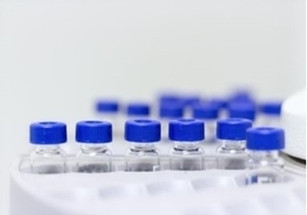Posted by Chrom Tech on 15th Oct 2025
Reverse-Phase Liquid Chromatography vs. Hydrophilic Interaction Liquid Chromatography
Liquid chromatography is one of the most widely used analytical techniques for separating complex mixtures. Among its most common approaches are Reverse-Phase Liquid Chromatography (RPLC) and Hydrophilic Interaction Liquid Chromatography (HILIC). Both techniques rely on an HPLC pump that drives the mobile phase—typically a solvent containing the analyte—through a stationary phase under high pressure. The compounds are then detected and analyzed for identification and quantification.
While reverse-phase chromatography is the default choice for most analytes, HILIC offers superior performance for polar and highly polar compounds that are poorly retained in traditional reversed-phase separations. Understanding the differences between these two modes helps scientists select the most efficient method for their analytical needs.
Reverse-Phase Liquid Chromatography (RPLC)
Reverse-phase chromatography is the most commonly used mode of liquid chromatography due to its broad applicability and reproducibility. In this method, the stationary phase is hydrophobic—typically composed of alkyl or aromatic ligands covalently bonded to silica particles. Polar analytes pass more quickly through the column, while nonpolar analytes interact more strongly with the stationary phase and elute later.
One major advantage of reversed-phase chromatography is the flexibility in stationary phase chemistry. Laboratories can choose from a variety of bonded ligands to achieve the desired selectivity and retention. The most popular options are end-capped C8 and C18 phases, which provide excellent peak symmetry and durability for small molecule analysis.
For more polar analytes, polar-embedded C8 and C18 bonded phases offer improved retention and selectivity. These stationary phases are fully compatible with 100% aqueous mobile phases and provide superior peak shape due to enhanced silanol shielding. Combined with high carbon loading and ultrapure silica, these columns deliver consistent and high-efficiency separations for a wide range of reversed-phase applications.
If analytes are still poorly retained using these phases, it may be time to consider a switch to HILIC chromatography for improved performance with polar compounds.
Hydrophilic Interaction Liquid Chromatography (HILIC)
HILIC is designed specifically for the separation of polar and hydrophilic analytes. Unlike RPLC, the mobile phase in HILIC is rich in organic solvent (typically acetonitrile) with water serving as the strong eluting solvent. This composition allows HILIC to retain polar compounds more effectively while still being compatible with modern LC/MS systems.
Because of its higher organic content, HILIC provides enhanced electrospray ionization (ESI) efficiency and improved desolvation during LC/MS analysis. This leads to taller peaks, reduced background noise, and improved signal-to-noise ratios for low-abundance compounds. HILIC also excels in separating metabolites, amino acids, sugars, and other highly polar compounds that may elute too early or not at all in reversed-phase systems.
Modern HILIC stationary phases are engineered for short equilibration times, high reproducibility, and excellent column stability, making them a reliable alternative for challenging separations. By using a combination of hydrophilic interaction and partitioning mechanisms, HILIC achieves high-efficiency separations that complement traditional reversed-phase workflows.
Reverse-Phase vs. HILIC: Key Differences
| Feature | Reverse-Phase LC | HILIC |
|---|---|---|
| Stationary Phase | Nonpolar (C8, C18, phenyl) | Polar (amide, zwitterionic, diol) |
| Mobile Phase Composition | Mostly aqueous with organic modifier | Mostly organic (acetonitrile) with water as strong solvent |
| Best For | Nonpolar to moderately polar compounds | Polar to highly polar compounds |
| MS Compatibility | Good | Excellent (enhanced ESI efficiency) |
| Elution Order | Nonpolar compounds elute last | Polar compounds elute last |
Choosing Between Reverse-Phase and HILIC
While both methods deliver high-resolution separations, the choice between RPLC and HILIC depends on the polarity of your analytes and the goals of your analysis. Reverse-phase columns remain the go-to choice for most small-molecule and pharmaceutical applications, whereas HILIC is ideal for polar metabolites, carbohydrates, and biomolecules.
Many analytical labs use both methods in tandem—starting with reversed-phase separations for nonpolar compounds and switching to HILIC for complementary or orthogonal separations of polar species. This dual approach provides comprehensive compound coverage and maximizes data quality.
Frequently Asked Questions
When should I use HILIC instead of reversed-phase chromatography?
Use HILIC when analyzing polar or hydrophilic compounds that exhibit poor retention in reversed-phase systems. HILIC provides greater separation for polar analytes and enhances MS signal strength.
Can HILIC and reverse-phase methods be combined in one workflow?
Yes. Many labs use both methods to achieve orthogonal separation—reversed-phase for nonpolar analytes and HILIC for polar ones. This combination maximizes compound coverage in complex sample matrices.
Which columns are best for reverse-phase and HILIC?
For reversed-phase LC, Agilent C18 columns are industry standards. For polar compounds, ZORBAX Bonus-RP and other HILIC phases offer excellent selectivity and reproducibility.

